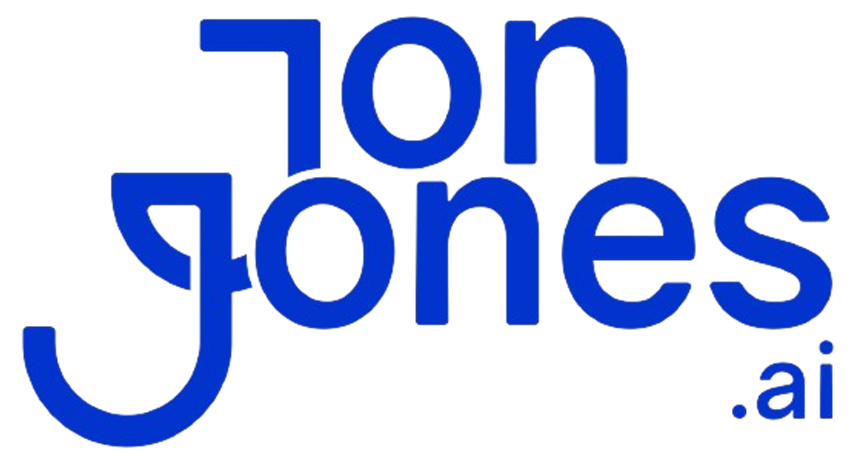You know that feeling when mundane tasks trap your team in a loop? Constant handoffs and endless status checks eat up hours and spark errors. Workflow automation (automating tasks by setting up triggers and actions across your apps) turns that chaos into a smooth, self-running system.
In this post, we’ll walk you through five top workflow automation tools that streamline your processes and boost accuracy. You’ll stop wasting time on data entry and get back to focusing on real growth. Ready? Let’s dive in.
Core Concepts of Workflow Automation

At its core, workflow automation is a trigger-and-action system (event-driven means something happens and the software jumps into action). We use smart workflow design to replace manual handoffs and keep tasks running in a set order inside your apps.
When your process lives in the app (in-app process orchestration), you blast through repetitive chores and cut down errors. Suddenly, your team isn’t stuck on busywork, they can tackle the big-picture stuff.
This isn’t robotic process automation (RPA), which is more like a screen-scraping bot clicking through multiple systems. Workflow automation stays inside your software, lining up every step to smooth your flow. Check out what is business process automation to dive deeper.
Key Benefits of Workflow Automation

Workflow automation (software that runs your routine tasks for you) takes the grunt work off your plate and cuts down mistakes. We start by mapping triggers (events that kick off a task) and actions (the steps that follow) so everything flows smoothly. That gives you a rock-solid routine for day-to-day work.
Automating these steps zooms up your process speed. You and your team wrap up projects sooner and send status updates right on cue.
It’s like setting a coffee machine – hit start and watch your workflows run while you grab a cup. You’ll see productivity numbers climb when tasks roll forward without a hitch.
Here’s what you get:
- Less error: ditching manual data entry means fewer typos and slip-ups
- Faster speed: software works at machine pace so you save hours on routine steps
- Easy growth: your processes scale up without hiring extra staff
- Clear view: shared dashboards let everyone see progress in real time
- Steady output: tasks run by the same rules each time – no surprises
In short, workflow automation frees your team from boring, repetitive work and spots snags before they slow you down. You get better results and more time for the work that really matters.
Workflow Automation Use Cases Across Business Functions

HR Process Automations
When you hire someone new, they fill out an online form that sends their info straight into your HRIS (human resources info system). Vacation requests go through one central form, so you and your team get automatic status updates, no more chasing down approvals. And once finance gives the green light, reimbursements process themselves. Check examples of business process automation to see more cross-department use cases.
IT Service Workflows
When someone submits a service request, an IT task springs to life and notifies the correct ticket owner. Jira issues auto-create and assign themselves based on the problem type. Then time-based reminders flag any upcoming compliance audits so you stay on track.
Marketing Campaign Automations
Marketing teams sort asset requests by type, like blog graphics or video snippets, then nudge approvers when designs land. They hook into LinkedIn and Facebook, scheduling posts to go live without extra clicks. That way you hit launch dates on the dot and track all your campaign stats in one place.
Sales & CRM Automation
When a new lead fills out your form, a welcome email sails out and a Slack alert pops up. Deals then glide through your pipeline, triggering task assignments and CRM status updates at each step. This end-to-end flow cuts out manual handoffs and keeps your sales momentum rolling.
eCommerce Order Flows
Each incoming order kicks off packing slips, inventory updates, and fulfillment tasks automatically. If a payment fails, the system fires off a next-day reminder so you can sort it out fast. After delivery, customers get an automatic invite to share their feedback.
Project Management Triggers
As soon as a task hits “Done,” it archives itself and tidies up your boards. Due-date reminders ping assignees before deadlines so nothing slips through cracks. And when a new item appears, the right person gets assigned instantly.
Leading Workflow Automation Tools: Comparison and Features

When we pick a workflow orchestration tool, you’ll ask: do we need a low-code automation platform (a tool that needs just a bit of coding), a no-code automation suite (all clicks, no coding), a cloud-based workflow platform (runs in the cloud), or an open-source management system (you can dive into the code)? Each one gives you a different mix of templates, drag-and-drop editors, and how deep it connects to your apps.
Next, here’s our side-by-side look at the top tools:
| Tool | Key Features | Free Plan | Major Integrations |
|---|---|---|---|
| ClickUp | Built-in status-change automations, template library | Yes | Slack, Google Drive, GitHub |
| Asana | Conditional logic, workflow rules | Yes | Slack, Microsoft Teams, Zapier |
| monday.com | Custom forms, time-based triggers, social publishing | Yes | LinkedIn, Facebook, Outlook |
| Jira | Auto issue assignments, project-tracking workflows | Yes | Confluence, Bitbucket, Slack |
| Trello | Drag-and-drop builder, approval-tool integrations | Yes | Dropbox, Google Drive, Salesforce |
| Zapier / Zoho | Multi-app connectors, drag-and-drop email drip builder | Zapier: Yes Zoho: Yes |
Google, Salesforce, Mailchimp |
Step-by-Step Implementation of Workflow Automation

Identify Tasks & Triggers
Ever felt bogged down by the same tasks day in and day out? We did too. Okay, let me rephrase: grab a doc and list every repetitive step – like sending that same follow-up email every morning or copy-pasting sales numbers.
Next, pick clear triggers (an event that starts your automation) – like a status change, due-date arrival, or someone clicking “complete.” And document who owns each task so nothing slips through the cracks.
Map Your Process Flow
Now, we’ll map how work moves between people and tools. Think of it like drawing a subway map – each station is a task, and the lines show handoffs. Use simple diagrams (process mapping, drawing your steps visually) to capture who does what and when.
This visual sketch helps you spot missing links early. If a task vanishes between apps or roles, you’ll catch it before it slows you down.
Choose the Right Tool
Next, pick a platform that fits your team’s vibe. Low-code (drag-and-drop builder) or no-code (zero programming) – it’s up to you. Just make sure it integrates with your apps, like your CRM or email, and lets you tweak flows without IT delays.
Then, check for conditional workflows (if/then logic that skips extra scripts). They’ll keep your automations flexible as needs change.
Design & Configure Workflows
Time to build. Set up trigger-and-action chains: when a deal moves to “Review,” ping the right person; when a deadline passes, auto-assign a follow-up.
Templates are your shortcuts – like using a tried-and-true recipe for common tasks. And if you need multiple paths, use conditional steps instead of writing custom code. It’s cleaner, faster, and easier to tweak later.
Test & Debug Automations
Before you flip the switch, run each path with sample data. It’s like doing a dress rehearsal – walk through every scenario to spot gaps or data leaks. Tweak until each trigger kicks off the right action in real time.
And double-check notification deliveries so no one misses a beat. Nice.
Team Training & Rollout
Okay, here’s where you bring your crew on board. Demo the new flows in under ten minutes, share a one-page cheat sheet, and invite questions – live or on Slack.
Then, after a week, circle back for feedback and make tweaks. It keeps everyone engaged and the system sharp.
Monitor, Measure & Optimize
Finally, track metrics like task turnaround time and error rates. Think of it as routine tune-ups – schedule monthly check-ins to spot bottlenecks.
When you see tasks piling up or mistakes creeping in, adjust your automation so everything stays smooth as you grow.
Best Practices and Optimization Strategies for Workflow Automation

-
Design and set up your workflows (a workflow is a series of automated tasks). Break big processes into micro-automations (tiny, self-running steps). Test each mini-flow on its own, and tweak quickly. Nice.
Example: Imagine you auto-tag every incoming lead, leads from Acme Corp land in your VIP queue without you lifting a finger.
-
Next, monitor, measure, and refine your automation. Keep your process map (a visual guide to your workflow) in a shared folder and pick a regular review date. That way, you catch hiccups early.
Example: At your monthly check-in, you notice a trigger misfired on hot prospects. So you tweak the criteria right then and there.
Case Studies and ROI of Workflow Automation

Company A is a 250-employee HR and finance services provider. We created a multi-step workflow (step-by-step digital process) to automate invoice approvals and expense reimbursements.
This new system slashed invoice processing time by 60% and trimmed data-entry mistakes by a third. That’s close to the 38% error drop most companies report.
We also cut out 150 hours of manual work each month, fueling a 180% return on investment in just five months. Then, their finance team moved that freed-up time to strategic budgeting and forecasting.
Company B is a ten-person digital marketing agency. We set up automated lead routing (auto-assigning new leads) and nurture sequences (automated email series) to send welcome messages and follow-up tasks.
Their response time plummeted by 45%, and lead-to-client conversion jumped 25%, driving an 18% bump in monthly revenue. They reclaimed about 50 manual work hours each week, so they doubled their campaign output without adding headcount.
Eighty-eight percent of the team says workflow automation gave them a sharper competitive edge. Not bad, right?
Integration, Compliance, and Security in Workflow Automation

Ever feel like your data lives in silos? We keep your systems in sync with seamless API (application programming interface) connections, no more manual handoffs.
We link your ERP (enterprise resource planning) system, CRM (customer relationship management) software, and HRIS (human resources information system) tools through secure, reliable connectors. Then we use database automation (a way to move data automatically) to push records from QuickBooks or SAP straight into your Slack and Zoom channels.
When a record updates, a trigger fires, new tasks or notifications pop up so your team never waits on data. Nice.
Every step in your automated workflows is logged in an audit trail, giving you a clear record of who did what and when. That makes compliance a breeze, no more scrambling for reports. Role-based access controls make sure only the right people can tweak your processes, so you stay in control.
And if a task ever fails, retry logic (a safety net that reruns failed steps) jumps in automatically. You’ll hit your SLA (service level agreement) targets and keep your data intact.
Audits? Fast and painless. You’ll sleep easy knowing your sensitive info is locked down.
Final Words
In the action, you saw how workflow automation (when this happens, do that) cuts manual handoffs, speeds tasks, and slashes mistakes. Then we explored real-world automations in HR, IT, marketing, sales, e-commerce, and project management. We even compared top tools and offered a step-by-step setup plan.
We topped it off with best practices, solid ROI stories, and tips for secure, compliant integration.
Now it’s time to put this into action. With workflow automation in your corner, you’ll ease workloads and power up growth.






